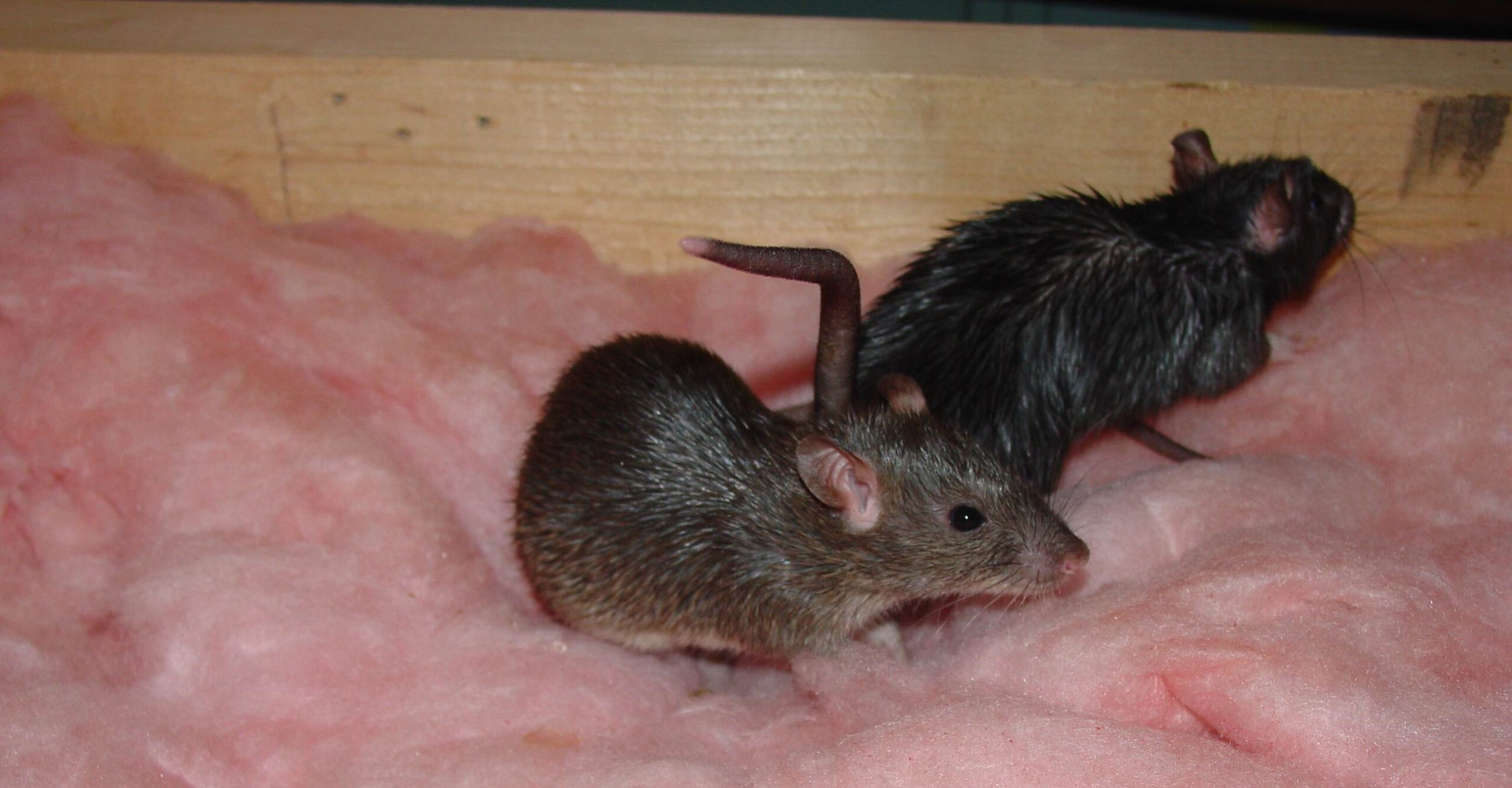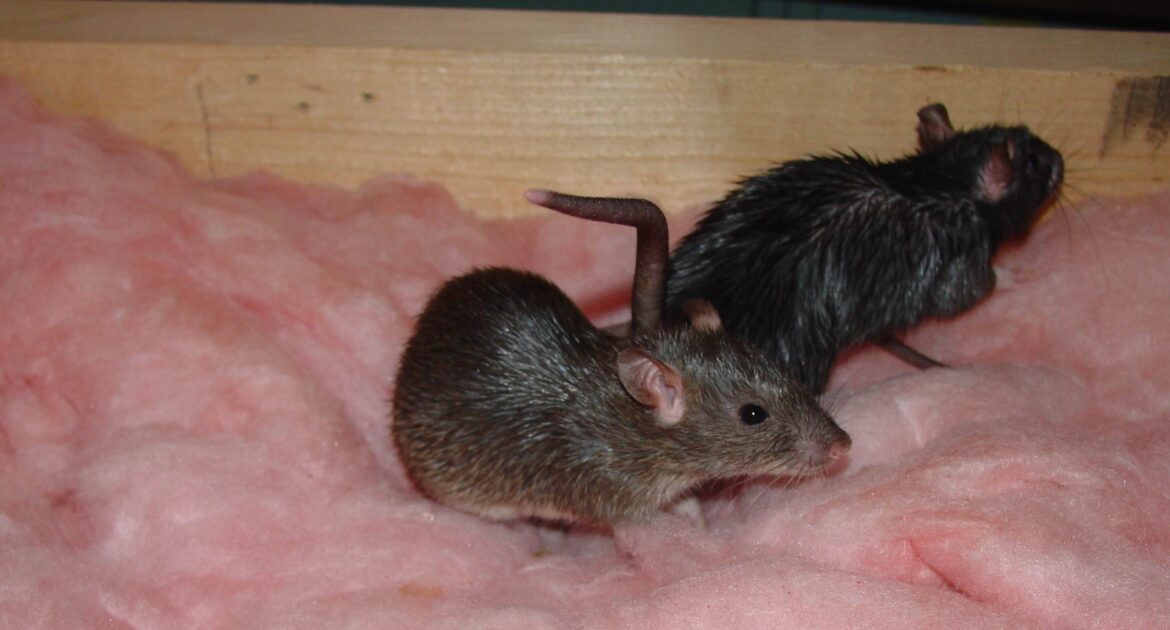When it comes to unwanted guests in your Milwaukee home, rats are among the most concerning. The risks associated with DIY rat removal extend far beyond the initial challenge of catching these intelligent pests. As a team with over 30 years of experience dealing with wildlife problems in homes across the area, we at Skedaddle Humane Widlife Control have observed how homeowners’ well-intentioned efforts can lead to more complex issues.
Rats can become unwelcome fixtures in your home’s structure if not properly addressed. Before you head to the hardware store for traps or poisons, it’s crucial to understand the complete picture of what you’re facing.
DIY Rat Removal Health Risks
When homeowners attempt to handle infestations on their own, they often underestimate the serious health threats involved. Rats are not just a nuisance; they’re carriers of potentially dangerous diseases that can spread throughout your home.
Disease Transmission Risks
Working around infested areas without proper protection puts you at risk of contracting several serious illnesses:
- Hantavirus: This respiratory disease spreads through contact with or inhalation of aerosolized rat urine, droppings, or saliva. When disturbing nesting areas during DIY removal, you might unknowingly release virus particles into the air.
- Leptospirosis: Rat urine can contaminate surfaces and water in your home. Without professional-grade protective equipment and sanitization procedures, you may inadvertently expose yourself and family members to this bacterial infection.
- Salmonellosis: Handling areas where rodents have been present without proper sanitation can lead to this common but serious food poisoning illness.
Direct contact dangers also exist, as many homeowners don’t realize that rats may bite when cornered or threatened during removal attempts. These bites can transmit rat-bite fever and other infections that require medical attention.
During DIY removal, homeowners often disturb accumulated droppings and urine, creating airborne particles that can spread throughout your ventilation system. Without industrial-grade respirators and proper cleaning protocols, you risk exposure to these pathogens.
Property Damage Risks from Incomplete DIY Solutions
One of the major dangers of removing rats yourself is the likelihood of incomplete eradication and the ongoing damage that results. Rats are incredibly prolific breeders—a fact many DIY guides fail to emphasize.
The Escalating Damage Cycle
When DIY methods only remove part of an infestation, the remaining rodents continue to:
- Chew electrical wiring: This creates serious fire hazards inside your walls that may go undetected until it’s too late. Milwaukee’s older homes are particularly vulnerable to this risk.
- Damage insulation: Rats shred insulation for nesting material, potentially increasing your energy bills and reducing your home’s efficiency during Wisconsin’s harsh winters.
- Gnaw on structural elements: Rodents’ teeth never stop growing, so they constantly chew on wood beams, drywall, and other building materials to wear them down.
- Destroy plumbing: Many homeowners don’t realize that rats commonly chew through PEX plumbing lines, leading to hidden water damage that can cost thousands to repair.
Long-term consequences are often observed, as a partially addressed rat problem can lead to more extensive damage over time. We’ve seen cases where what began as a minor infestation led to major structural repairs because DIY methods didn’t fully resolve the issue.
The False Economy of DIY Rat Control
Many homeowners turn to DIY solutions thinking they’ll save money, but this approach often becomes more expensive in the long run.
Hidden Financial Costs
When assessing the true cost of DIY rat removal, consider these often-overlooked expenses:
- Repeated purchases of ineffective products can add up, as most homeowners go through multiple rounds of traps, poisons, and repellents before realizing they’re not effective.
- Damage remediation, addressing structural damage caused during an extended infestation, typically costs much more than professional removal would have.
- Sanitation expenses are significant, as properly cleaning and disinfecting after an infestation requires specialized equipment and products.
- Furthermore, health-related costs arise as medical treatment for rat-borne illnesses can far exceed the cost of professional wildlife control services.
For a financial reality check, the average DIY rat removal attempt can end up costing homeowners 2-3 times more than professional services when accounting for all related expenses and damages.
Safety Concerns with DIY Poisons and Traps
The tools available to consumers for rodent control come with significant safety concerns that aren’t always clear from product packaging.
Poison Problems
Rodent poisons purchased at hardware stores present several serious risks:
- Secondary poisoning: When rodents consume poison and die, they can be eaten by pets or wildlife, spreading toxins up the food chain.
- Accidental exposure: Children may find and handle poisons or poisoned rodents, putting themselves at risk.
- Die-in-place issues: Poisoned rats often crawl into inaccessible areas before dying, creating persistent odor problems and attracting insects.
Trap Troubles
Even seemingly simple trap solutions have drawbacks:
- Ineffectiveness: Rats are neophobic (fearful of new objects) and often avoid unfamiliar traps in their environment.
- Inhumane outcomes: Improperly set traps can cause suffering rather than quick, humane removal.
- Incomplete capture: Trapping a few rats provides a false sense of success while the majority of the colony remains active.
Proper handling is crucial, as without training in safe rodent handling and disposal methods, homeowners risk exposure to pathogens when removing captured or deceased rats.
The Entry Point Problem: Why DIY Removal Fails
The most critical aspect of rodent control is identifying and sealing entry points—something DIY approaches rarely address effectively.
Finding the Hidden Access Points
Rats can squeeze through openings as small as a quarter, making entry point detection challenging for untrained individuals:
- Foundation gaps are especially common in Milwaukee’s historic homes, where settling has created small cracks.
- Roof and attic vents are often damaged or improperly screened, providing perfect access for climbing rodents.
- Utility penetrations are openings where pipes and wires enter your home, which frequently go unnoticed.
- Garage door gaps, even small spaces beneath garage doors, provide easy access for rodents.
Without specialized equipment like thermal cameras and experience identifying rat entry behaviors, most homeowners miss crucial access points, guaranteeing re-infestation.
The Professional Approach: Why Expert Removal Works
At Skedaddle, our comprehensive approach addresses the shortcomings of DIY methods and provides long-lasting results.
Our Three-Step Process
Our wildlife technicians follow a proven system for effective rodent removal:
- Thorough inspection and assessment: We use advanced tools to identify every entry point and determine the full extent of the infestation.
- Humane removal: Our methods safely remove all rodents without unnecessary suffering or risk to your family.
- Complete exclusion and prevention: We seal all entry points with rodent-proof materials and provide guidance on making your property less attractive to pests.
Safe rat removal tips from professionals include making sure all potential food sources are secured, maintaining a clean environment, and addressing moisture issues that attract rodents. However, these preventive measures work best after professional removal is complete.
Signs You Need Professional Help Instead of DIY
Recognizing when a rat problem exceeds DIY capabilities is crucial for protecting your home and family.
When to Call the Professionals
Consider professional help if you’ve seen multiple rodents despite DIY efforts, you hear scratching noises in walls or ceilings, droppings continue to appear after attempted removal, there’s evidence of chewing on wires, food packages, or structural elements, or you have family members with respiratory conditions who might be sensitive to rat-related pathogens.
Attempting to handle a rat infestation on your own can lead to significant health and financial risks—don’t let these potential dangers become a reality in your home. If you’re facing persistent rodent issues, it’s time to seek professional intervention. Contact Skedaddle Humane Wildlife Control in Milwaukee today to ensure safe, efficient, and complete rat removal that safeguards your home and family.




